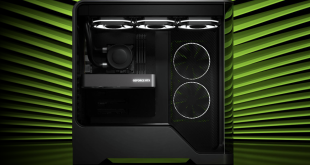While there has been plenty of discussion online about AMD's RX 7900 XTX, the RX 7900 XT seems to have flown under the radar somewhat. Built on a cut-down Navi 31 GPU, the 7900 XT offers fewer cores and less memory than its XTX sibling, but at a lower price point of £899.99.
That does make things slightly tricky, as right now there is no clear competitor to the 7900 XT. We'd expect it to go head-to-head with the RTX 4070 Ti that's rumoured for a CES 2023 reveal, but currently it is only competing with last-gen products, and the 7900 XTX itself.
Still, we can of course talk about the levels on performance on offer. There's no doubt it's a capable graphics card, offering 160FPS on average at 1440p, and 90FPS on average at 4K. It isn't a huge upgrade over the RX 6900 XT however, proving to be 26% faster at 1440p and 28% faster at 4K. Then again, it's also 11% and 7% faster than the RTX 3090 Ti at 1440p and 4K, respectively, and that GPU retailed for close to £2000 only earlier this year, so it depends how you look at it.
Arguably the most important comparison is against the RX 7900 XTX however, and here the XT comes in 11% slower at 1440p and 15% slower at 4K. That's despite being just 10% cheaper, so it's actually worse value than the RDNA 3 flagship, when we'd usually expect the cheaper product to offer better value. That is not the case here.
Ray tracing performance is another matter entirely. I do want to make it clear that RDNA 3 has made strides here and you will get a much more playable experience in-game with ray tracing enabled versus RDNA 2, there's no doubt that Nvidia still has the upper hand here. In RT-heavy games like Cyberpunk 2077 and Metro Exodus Enhanced Edition, the RX 7900 XT is slower than the RTX 3080 10GB – a card that's cheaper than the 7900 XT and launched over two years ago.
Of course, how important this is to you will vary from person to person. That said, I do think the landscape has changed, and while I didn't think the relatively poor ray tracing performance was that big of a deal when RDNA 2 launched two years ago, more games than ever now support the technology and that's only going to ramp up as we head into 2023 and beyond.
AMD's new reference design graphics card is another impressive piece of work. We found that the cooler comfortably dealt with the 315W power output, and while noise levels aren't super quiet at 40dBa, it isn't overly loud either. I did notice a bit of coil whine in certain situations however, it was nothing awful but was audible over my case fans in certain games.
Speaking of power draw, this is a keen area of interest for me, and in this review we have deployed our in-depth methodology where we test power draw of each GPU across twelve games at three different resolutions (which you can find starting on page 27 of this review). As it turns out, the 7900 XT draws pretty close to its rated 315W TBP in almost all situations – there are some slight fluctuations here and there, but it averaged 306.7W power draw at 1440p and 310.2W at 4K.
Considering that the 7900 XT is therefore more power hungry than an RTX 4080 (which averages 280W at 4K), while also being the slower GPU, it's pretty clear to see that RDNA 3 isn't able to match Ada Lovelace in terms of efficiency. Against the RX 6900 XT, we're looking at a a 25% uplift in performance per Watt, though that shrinks to 20% against the RX 6800. These are decent strides, yes, but the 40-series has won back the overall efficiency crown for this generation.
All told, the RX 7900 XT is a bit of funny graphics card to assess. As mentioned, we don't yet know how it will slot in against the rumoured RTX 4070 Ti, but even against its own big brother, it actually offers worse value for 1440p and 4K gaming, while also proving less efficient at 4K. The margins aren't huge, and there may well be some reading this who could just about stretch to paying £900 for a GPU, but for whom £1000 is just too much.
Then again, it seems to me that the RX 7900 XT is intended to be the classic option designed to upsell you into paying £100 more for the XTX model. It's not a bad graphics card in its own right, but it's certainly not as alluring as the XTX. Only time will tell how it stacks up against Nvidia's RTX 4070 Ti.
A final note on stock. We've been in talks with Overclockers UK who reckon they have in about 1000 units, with MBA (Made By AMD) cards ready to ship on December 13. Custom boards are looking thin on the ground however, but we are expecting supply to come through in 2-4 weeks for XT, but slightly longer for XTX.
The 7900 XT will be available to purchase from OCUK HERE.
Discuss on our Facebook page HERE.
Pros
- Objectively good rasterisation performance, faster than RTX 3090 Ti.
- Ray tracing, while still not always competitive, has at least improved significantly versus RDNA 2.
- Reasonable improvement to efficiency over RDNA 2.
- Sleek reference design, more compact than 4080 Founders Edition.
- DisplayPort 2.1 support.
Cons
- Worse value than RX 7900 XTX for 1440p and 4K gaming.
- Power draw is higher than RTX 4080.
- Less efficient than Ada Lovelace/RTX 40-series.
- Still expensive at £900.
- Some audible coil whine.
KitGuru says: We will get a better idea of how the RX 7900 XT fits in once the RTX 4070 Ti is released, but it's certainly the weaker of the two 7900 series graphics cards released today.
 KitGuru KitGuru.net – Tech News | Hardware News | Hardware Reviews | IOS | Mobile | Gaming | Graphics Cards
KitGuru KitGuru.net – Tech News | Hardware News | Hardware Reviews | IOS | Mobile | Gaming | Graphics Cards





